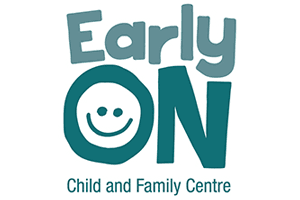Gua Sha is a traditional healing practice originating from East Asia, particularly China, which involves using a tool to gently scrape the skin in long strokes. While it has been practiced for centuries in Traditional Chinese Medicine (TCM), it has gained renewed popularity, especially through social media, where many people use a lighter form of the technique at home for facial care.
What is Gua Sha?
Gua Sha, pronounced “gwah-shah,” involves scraping a smooth-edged tool, typically made from jade, rose quartz, or even stainless steel, across the skin. The technique aims to relieve pain, tension, and blockages in the body by stimulating circulation and energy flow, known as qi (pronounced “chee”) in TCM. The pressure applied during body scraping can leave behind marks called sha, which appear as red or purple spots. These marks are thought to signify that stagnation in the body is being moved or broken up.
In TCM, it is believed that the flow of qi can become obstructed, leading to pain, tension, or illness. Gua Sha helps to release these blockages by stimulating blood circulation and promoting the movement of stagnant energy. Modern adaptations of Gua Sha also draw on these principles, though many practitioners today focus more on muscle pain relief, muscle relaxation, and promoting lymphatic drainage.
Key Benefits of Gua Sha
There are several potential benefits of Gua Sha that have gained attention in both traditional medicine and modern wellness practices:
1. Lymphatic Drainage and Facial Care
One of the most popular uses of Gua Sha today is for facial rejuvenation and lymphatic drainage. Practitioners believe that scraping the skin on the face and neck helps promote the movement of lymph, which can reduce puffiness, improve skin tone, and promote relaxation. A 2022 study published in the Journal of Cosmetic Dermatology suggested that short-term use of Gua Sha could temporarily reduce puffiness by helping to drain excess fluid and improve vascular dilation. Regular use may lead to longer-lasting benefits, such as improved blood circulation and reduced muscle tension in the face.
Facial Gua Sha has become a common practice among individuals seeking anti-aging benefits, as it is thought to encourage a healthier, more youthful complexion by stimulating blood flow to the skin and underlying muscles.
2. Pain Relief for Muscles and Joints
Another significant application of Gua Sha is for treating musculoskeletal pain. The technique has been used for centuries to address pain in the back, neck, shoulders, and joints. Gua Sha can help break down scar tissue, ease muscle tension, and reduce inflammation, potentially offering relief for chronic pain conditions such as back pain, tendonitis, and even conditions like carpal tunnel syndrome.
A 2021 review of studies examining the effects of Gua Sha on chronic back pain found that it could improve quality of life for individuals suffering from musculoskeletal pain, especially when used alongside other medical treatments. While more research is needed to confirm these results, the therapeutic benefits of Gua Sha for pain relief are well-established in traditional practices.
3. Immune System Support and Reduced Inflammation
Practitioners of Gua Sha believe that the technique can also support the immune system and reduce inflammation. It is sometimes used to treat conditions like colds, fevers, and respiratory issues, such as coughs or lung congestion. Though there is limited clinical evidence to confirm these claims, proponents argue that the increased circulation and energy movement facilitated by Gua Sha can strengthen the immune response and help alleviate symptoms of common ailments.
Who Should Avoid Gua Sha?
While Gua Sha can offer benefits for many people, there are certain groups for whom the practice may not be appropriate. Individuals who should avoid Gua Sha include:
- People with skin conditions such as eczema, psoriasis, or rashes.
- Individuals with blood clotting disorders or those taking blood-thinning medications.
- People with deep vein thrombosis (DVT), as Gua Sha could worsen this condition.
- Those with infections, open wounds, or unhealed injuries.
- People with implanted medical devices, such as pacemakers or defibrillators, should also avoid the practice.
Pregnant women should consult with their doctor before using Gua Sha, especially on areas like the abdomen or lower back.
Techniques and Tools for Gua Sha
Gua Sha is performed using a tool with a smooth edge, which is used to scrape the skin in one direction. Traditional tools may include objects like coins or spoons, but modern Gua Sha tools are often made from jade, rose quartz, or stainless steel. These tools are typically weighted to allow the practitioner to apply controlled pressure.
In many cases, a light layer of oil is applied to the skin before scraping to allow the tool to glide smoothly. The practitioner uses long, firm strokes along the skin, usually following the natural lines of muscle fibers. When performed on the back or legs, the person receiving the treatment typically lies face down on a massage table.




